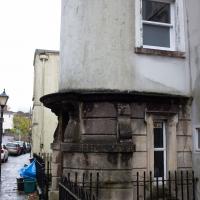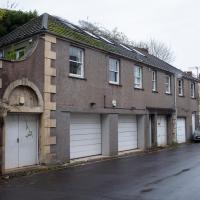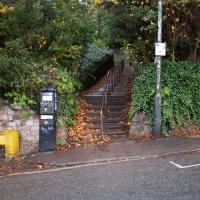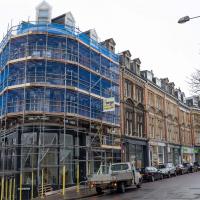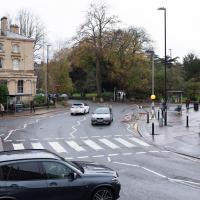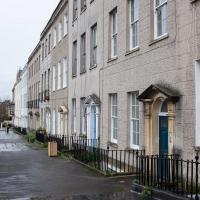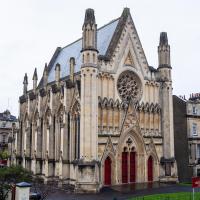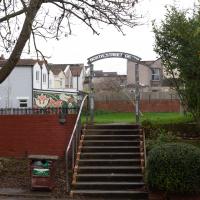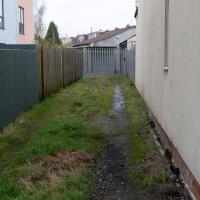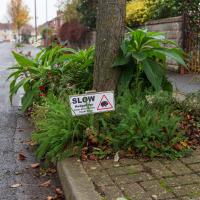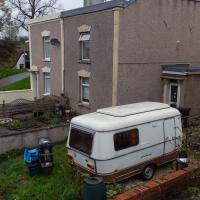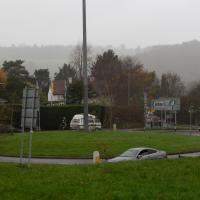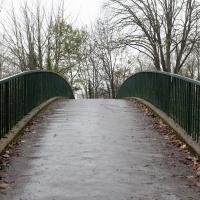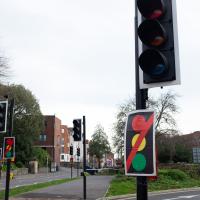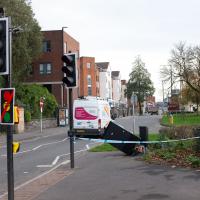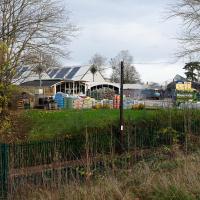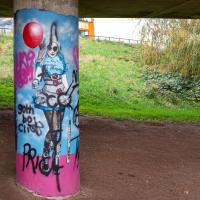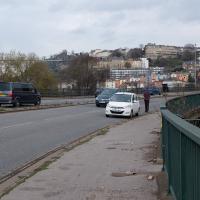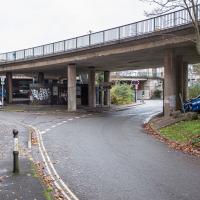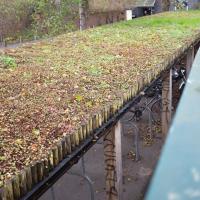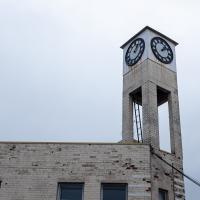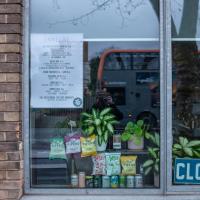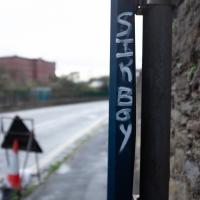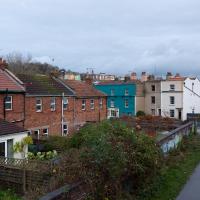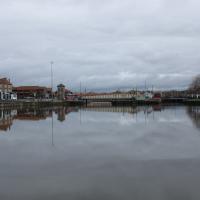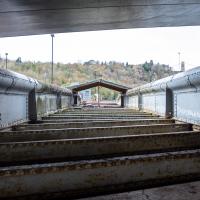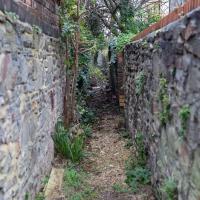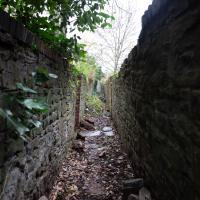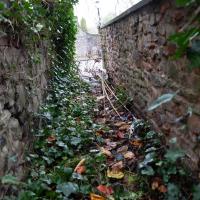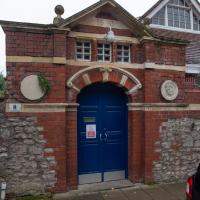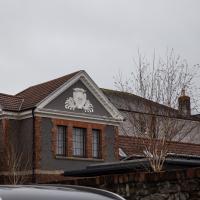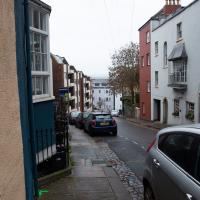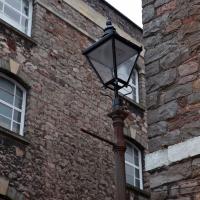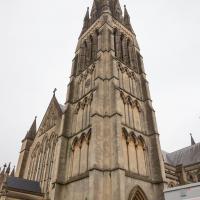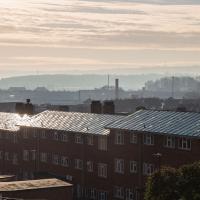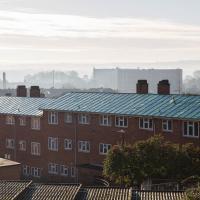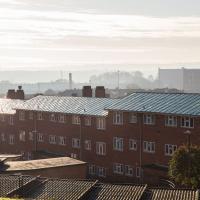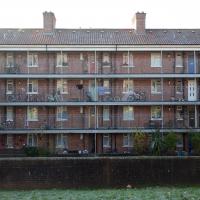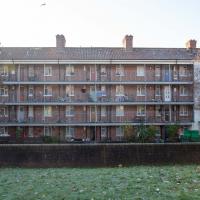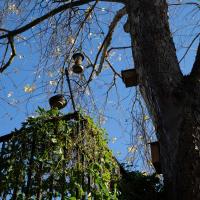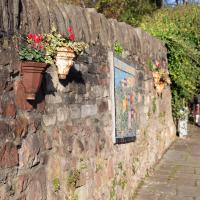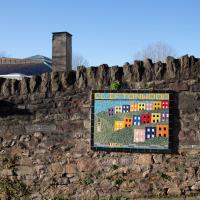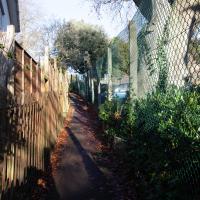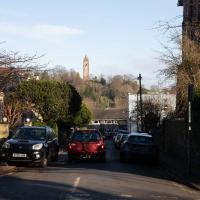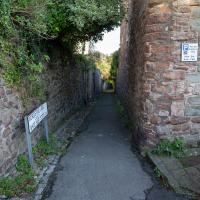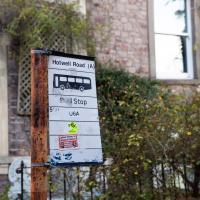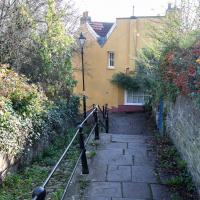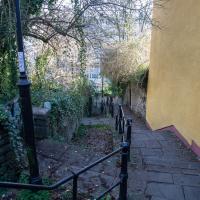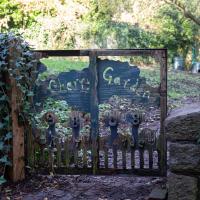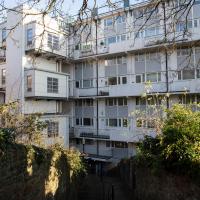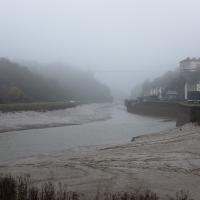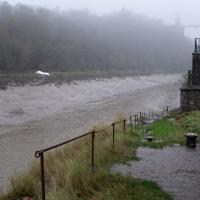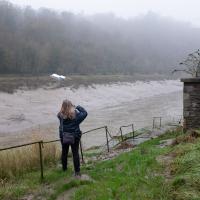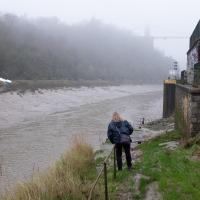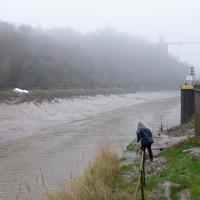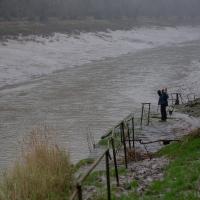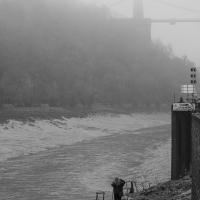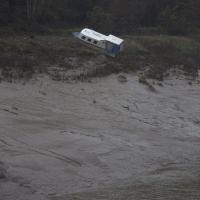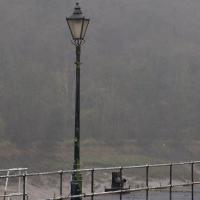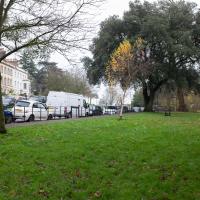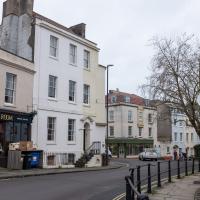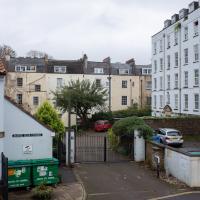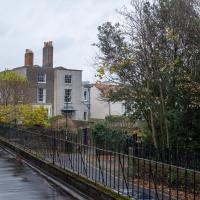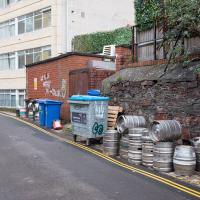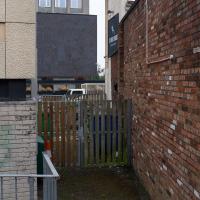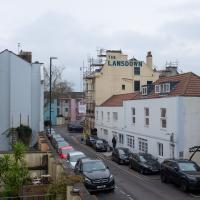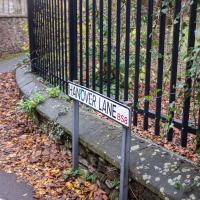Tagged: tree
Clifton Village Mini Wander
20 Nov 2020
Just a quick wander up the hill to get a flat white from Twelve. I really enjoyed the spooky mannequin (?) in the window.
The one nearest is an AirB&B-style rental and looks lovely inside. This is the kind of quirkiness I might aspire to.
Many a time have I wandered down this little cut-through that joins Saville Place and the Fosseway. A shortcut through the Polygon starts me off, then it's pretty much a straight line up through to here and on to Queen's Road.
I wonder how many times I've crossed this zebra crossing, or cut across the road at the little traffic island in the background to get to the diagonal path across Victoria Square?
From what I can work out, this terrace that starts in the road called Richmond Terrace itself continues around the corners to Clifton Road and here, Queens Road, while still being called Richmond Terrace.
Bedmo and Ashton Court
21 Nov 2020
A rather more wide-ranging weekend wander with Sarah and Vik, taking in some mock Tudor bits of Bedmo (I should note that I've subsequently been corrected to "Bemmie", but I'm an outsider and have been calling it "Bedmo" for short for decades...), a chunk of Ashton, a path up Rownham Hill called Dead Badger's Bottom(!), The Ashton Court estate, a bit of the UWE campus at Bower Ashton, and some of the Festival Way path.
I have no idea how anyone managed to smack this street furniture so hard, or what direction they came from to do it. It's a pretty straight 30mph road right there, and this is only one side of the dual carriageway. Never seen so much as a near-miss there.
That a BMW came a tad too fast out of Clifton Vale, lost it completely and trashed the main control box for the traffic lights. It took them quite some time to fix it. I'd imagine his insurance company is getting quite the bill...
I'm not sure I'd be waiting literally in the road here if my car had broken down. The continual strewing of the pavements on these flyovers with broken bits of cars, vans and lorries, large and small, suggests that smashes are pretty frequent.
Underpass
25 Nov 2020
A quick lunchtime jaunt for coffee. I've often wondered about the dots on the wall of the underpass. Apparently they're not intelligible Braille. Maybe it's Marain :D
Given that it's on an unwalled bike shed, I doubt it's there for insulation. The CREATE centre my just have it there as an example of what an eco-friendly roof can look like, though.
One of the other sides of this clock is very broken. At least these two show the same time, even if they're wrong. By my calculation, this broken clock is right six times per day.
At least someone's still watering the plethrora of plants that are arranged in Spike Island cafe's windows.
I don't think I ever crossed this bridge on foot before starting my "One Mile Matt" project.
I really must try another long-exposure with ND filters here; it looks very strange with the water made artificialy still like that, and I enjoy the effect.
A swinging footbridge, designed by Brunel, but not quite as famous, or these days as functional, as its counterpart in the distance.
And Back Down the Hill from the Flu Jab
21 Nov 2020
This is my return from getting my annual flu jab at Christ Church, as explained in more detail in my wander up the hill.
I don't think this is exactly a public right of way. But I started so I tried to finish without getting the police called on me by worried residents
This is now the Bristol School of Dancing. Their website says:
Built in 1893, it stands in the garden of 20 Vyvyan Terrace and it is rumoured that it was once a Swedish diplomatic building that contained a gymnasium. This is probably why on either side of the main entrance the words “Swedish Gymnasium” are carved.
Don't know what the JMJ is all about. Seems to be part of Cedar Care Homes (this is all behind their grand head office on Clifton Down Road, Mortimer House), but it's hard to tell for sure.
Up for the flu jab
21 Nov 2020
A trip up the hill to get my winter flu jab. I'm not sure I really needed it this year, what with avoiding Covid—I haven't had so much as a sniffle in more than a year—but seeing as they offered... Instead of the doctor's surgery on Pembroke Road, they'd taken over Christ Church, presumably to give more room and ventilation for the necessary social distancing at the moment. As usual, it was their typically efficient operation, and I was in and out in about three minutes.
On the way there and back I snapped as much as I could, but I wanted to be home in time for the first online Times Crossword Championship. As it turned out, I needn't have bothered, as the technology at the Times couldn't keep up with the demand from competitors, and their system just collapsed under the weight of page-views. They tried again the day after, and it collapsed just as badly. Maybe next year...
This wander is split into two parts, as I turned my tech off to go into Christ Church for my jab. The walk home can be found over here.
This was meant to be the day of the first online Times Cryptic Crossword Championship. Sadly the Times's web servers let them down, so the event was a washout, and I dashed back from my flu jab to take part for no good reason, as it turned out.
The destination for my wander today. My doctor's surgery branched out into Christ Church to give them more room for socially-distanced administering of the flu jab. Fast and efficient as usual.
Avoiding the Accounts
26 Nov 2020
I took the day off my day job to do my accounts—or at least do enough bookkeeping to send them to my accountant. I hate doing the books. I woke up late, tired and with a headache and decided to bunk off for a walk around Cliftonwood, Clifton Village and Clifton instead, taking in a couple of good coffees along the way. Thanks, Foliage Café, and Twelve for the flat whites.
The Long Lunchtime at the End of the World
27 Nov 2020
I took an extra-long break at lunchtime today as I'd taken the day off my normal day-job to do the accounts for my previous side-job, which is still generating paperwork, though not much in the way of money. This took me through some undiscovered bits of Cliftonwood, including Worlds End Lane, which unexpectedly leads to White Hart Steps. That's certainly not where I expected the end of the world to lead to...
I came up here drunk one night, searching for a shortcut home from somewhere around the Triangle. At least this time I was reasonably sure I'd not get out of the far end here.
A long ramble, starting with trying to find the Hot Well of Hotwells and leading up the side of the Avon Gorge to the Downs and then through Clifton for coffee.
Vik and I often just stand back calling helpful advice like "please don't die!" when Sarah's off getting a picture from some liminal space or other.
Ten O'Clock Shop and Can't Dance Coffee
30 Nov 2020
I had to return a faulty AirPod Pro to Apple (there's a first-world problem!) so I just took a quick trip up the hill to the nearest UPS drop-off point, The Ten O'Clock Shop, which is famously open until 11pm. Unfortunately it's a fairly cramped little place and neither of the staff were wearing masks, so I made it a very quick drop indeed and got out of there as quickly as I could.
I grabbed a quick coffee from Can't Dance, a stall that's—as of yesterday—in a tiny converted cargo container on the edge of Victoria Square; up until this week they were running from a little trike parked in the same place. Hopefully the new premises will let them see out the winter without worrying quite so much about the weather.
I tried to fit in a few extra streets from the surrounding area on my there and back, but that was basically my wander today: a quick little shopping trip.
This bit of grass is apparently called "Bobby's Green" or "Bobbies Green"—I've seen it written both ways. Several locals call it this; the only guess I've seen came from Louise on NextDoor:
don’t know why it’s called the Bobbies green except sometimes policemen used to lean or leave their bikes on the railings before there were so many parked cars. They used to come up constitution hill from the old police station at the entrance to Brandon hill on Jacobs Wells Rd and cycle around clifton so maybe that’s the reason- but that’s just a random guess.
Mint on the left, Rosemarino on the corner ahead, where the old York Cafe used to be, serving a full English for £1, back in the day.
Looking down onto Hanover Lane, which I often use as a cut-through when heading for the Triangle. In the Beforetimes I'd often walk between Waitrose and home via that route.
Around the back of the White Rabbit, which was the Richmond Spring when I first moved to the area, I think.
I'm not a great fan of their coffee, but that was based on a single try, so I should probably give them another go at some point. But there's so much coffee nearby that's pretty much guaranteed to be excellent—Twelve, Foliage, Spicer+Cole, to name but three—it's hard to take a chance.
I'm sure I've walked the length of Hanover Lane many times without ever taking in the fact that it's called Hanover Lane. It's not like there's anything down it, other than the backs of gardens on one side and an electrical substation on the other—I wonder it has a name at all.
